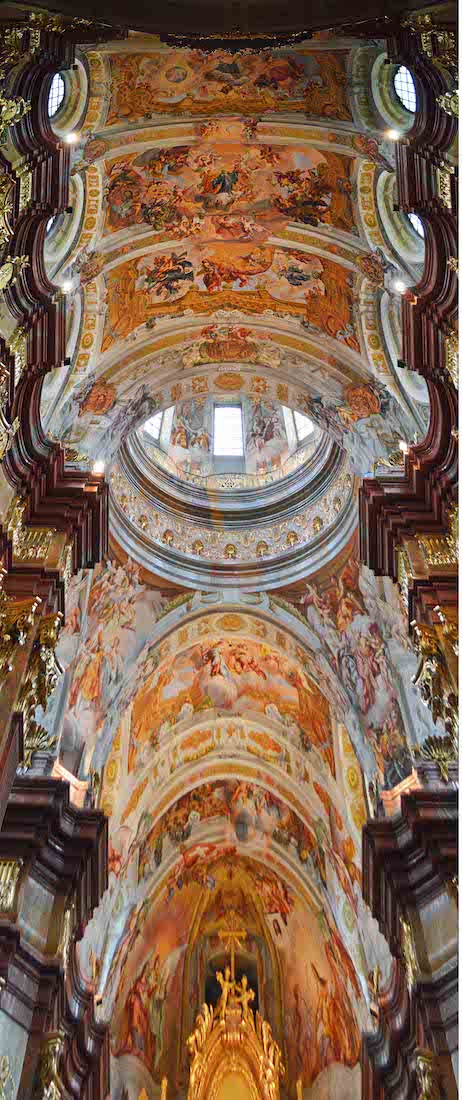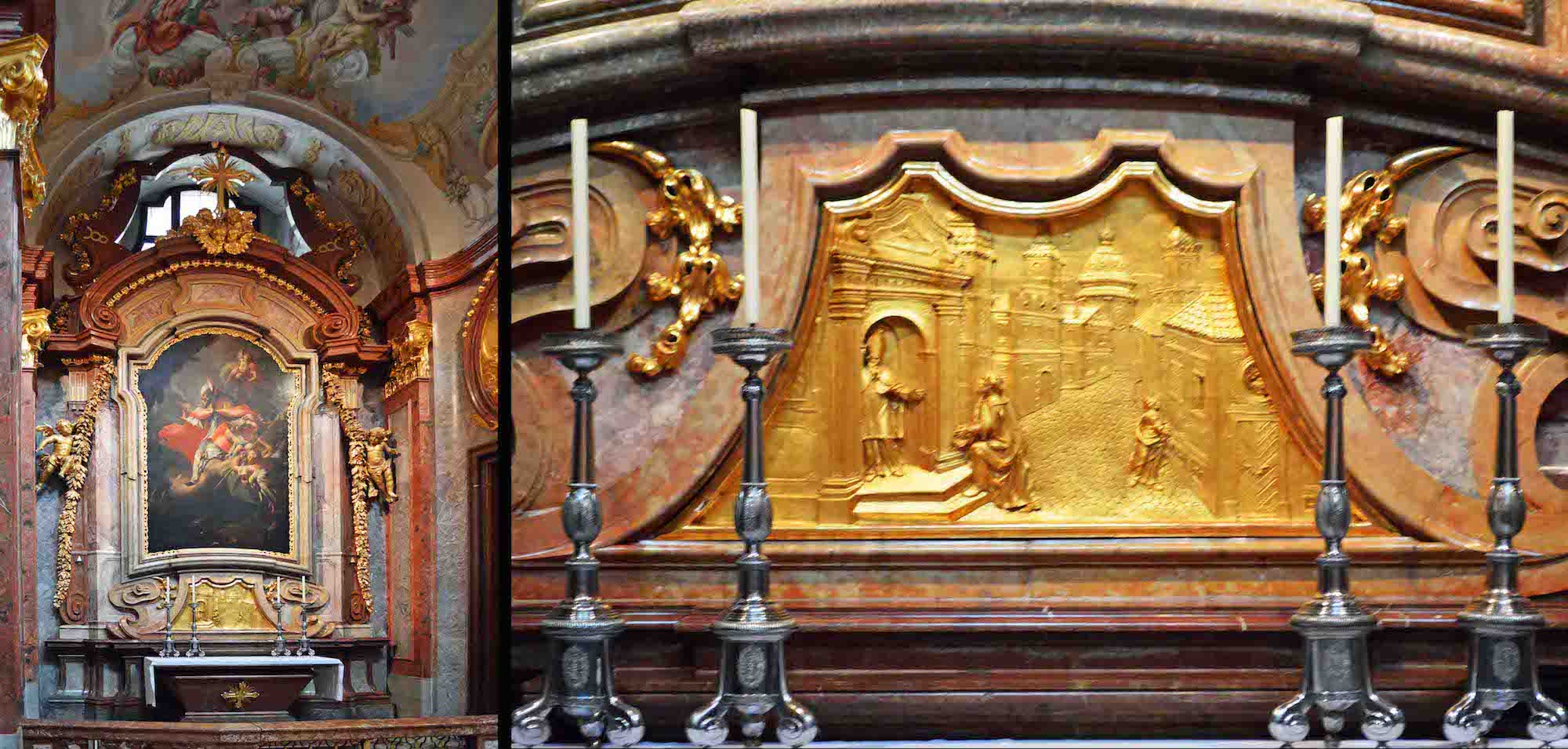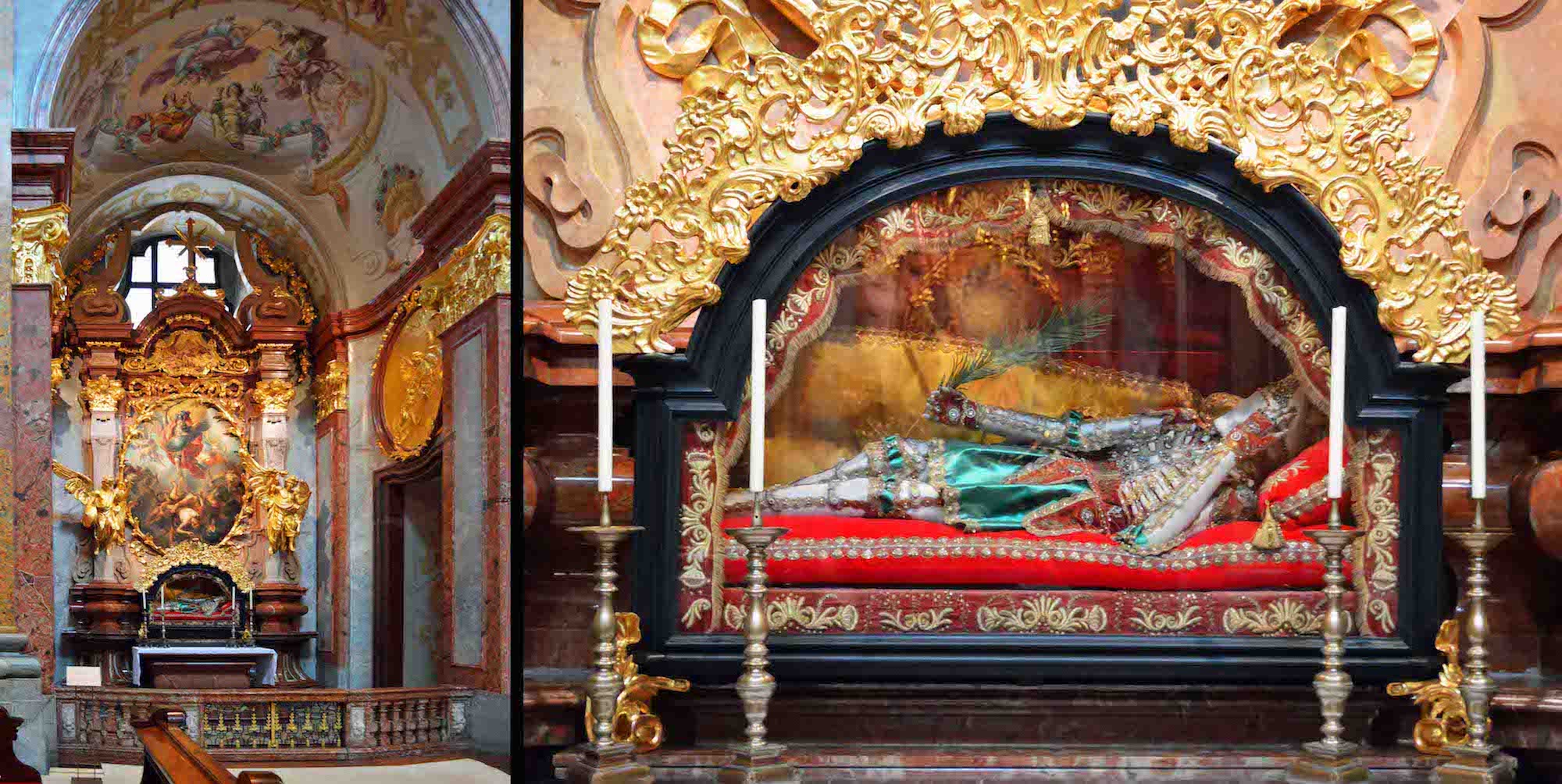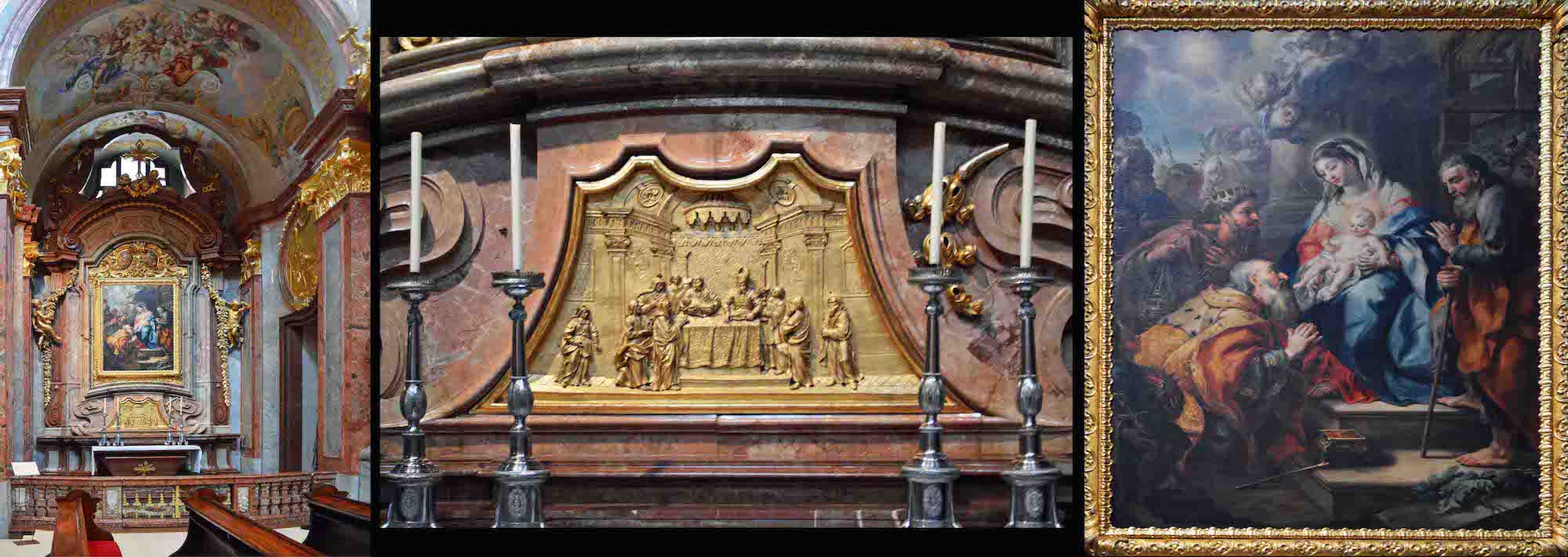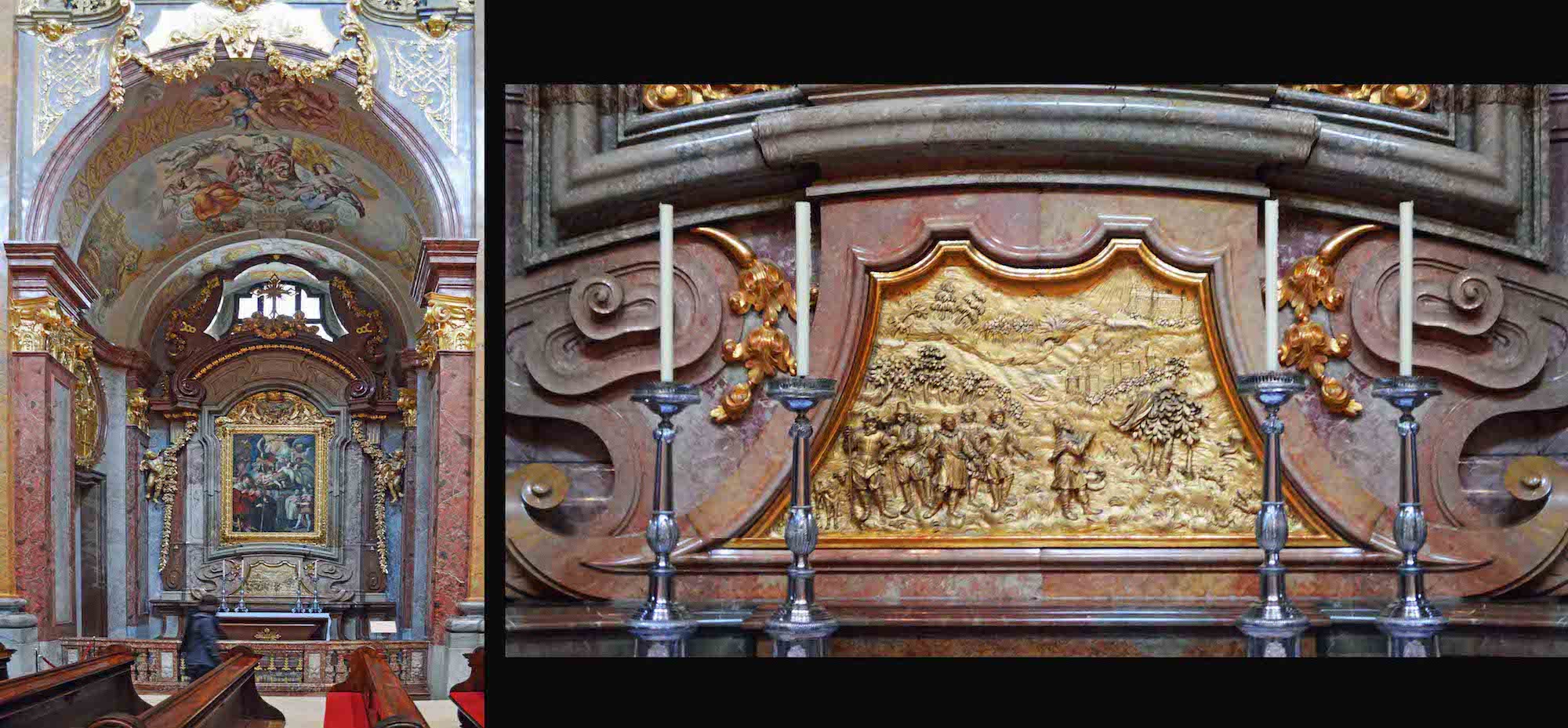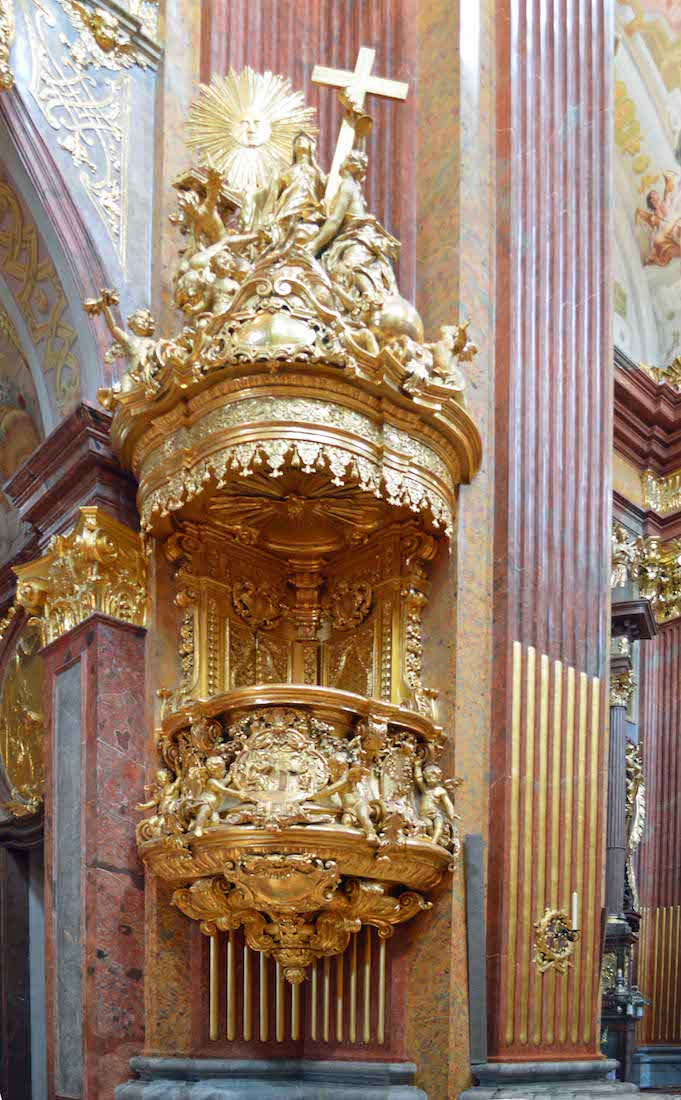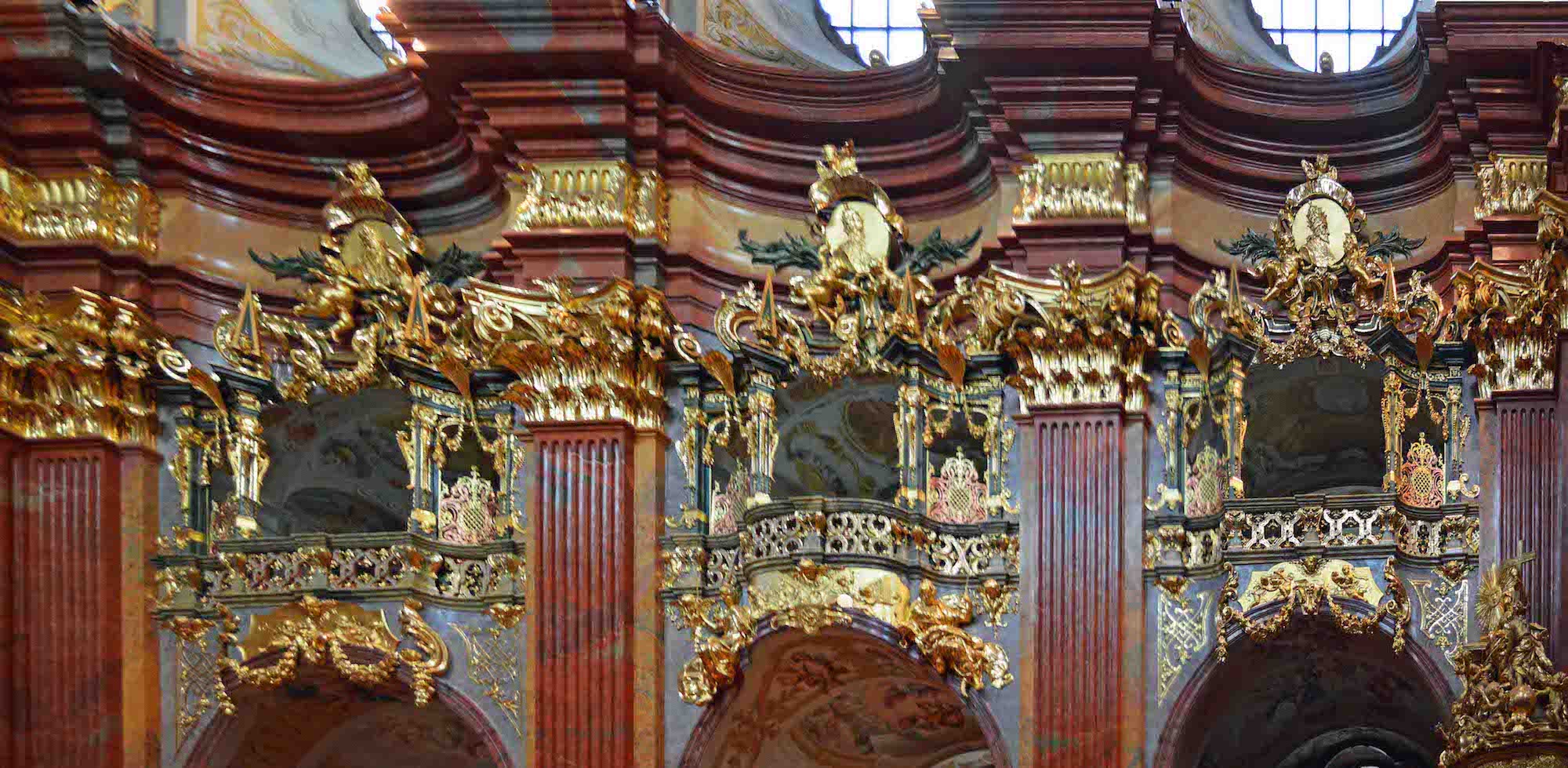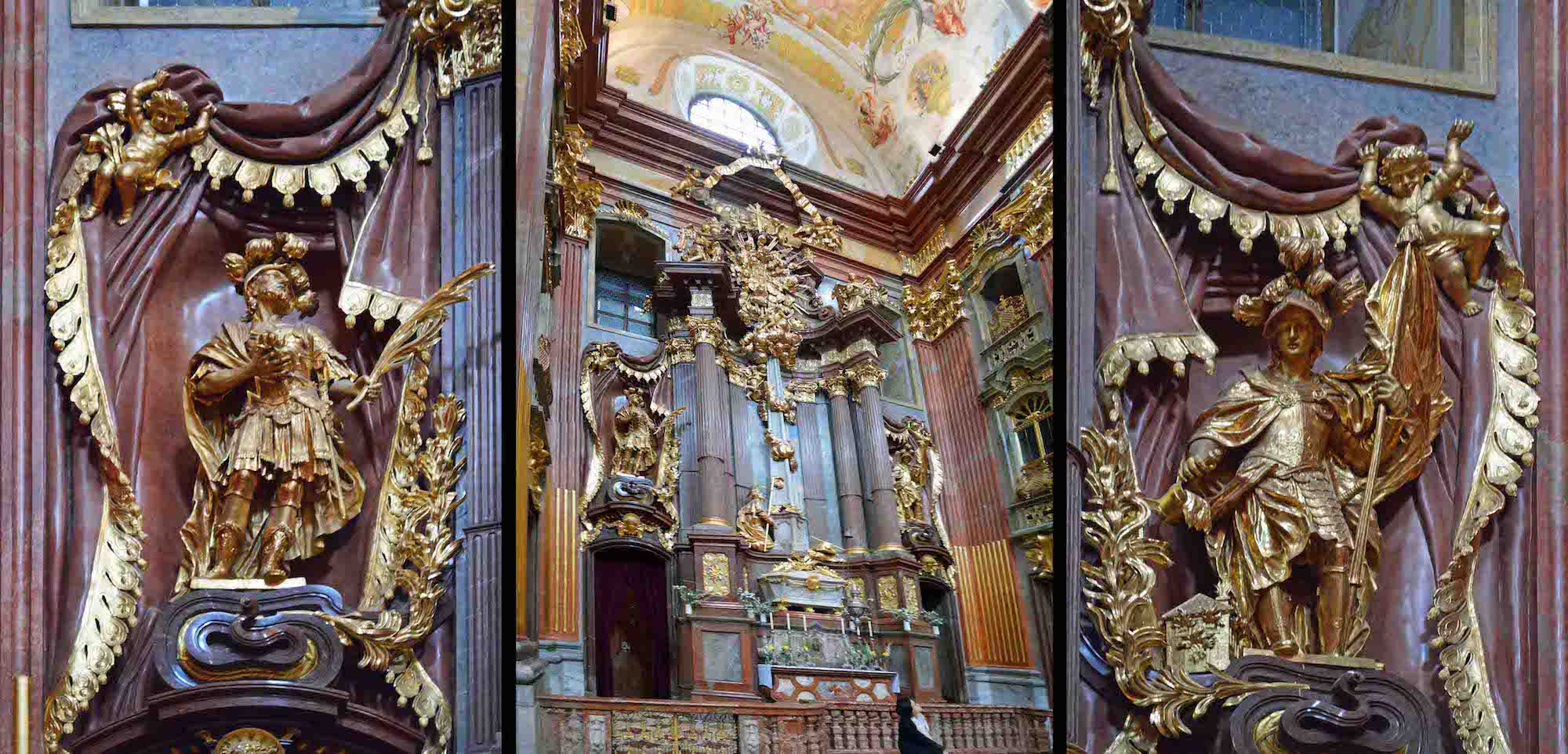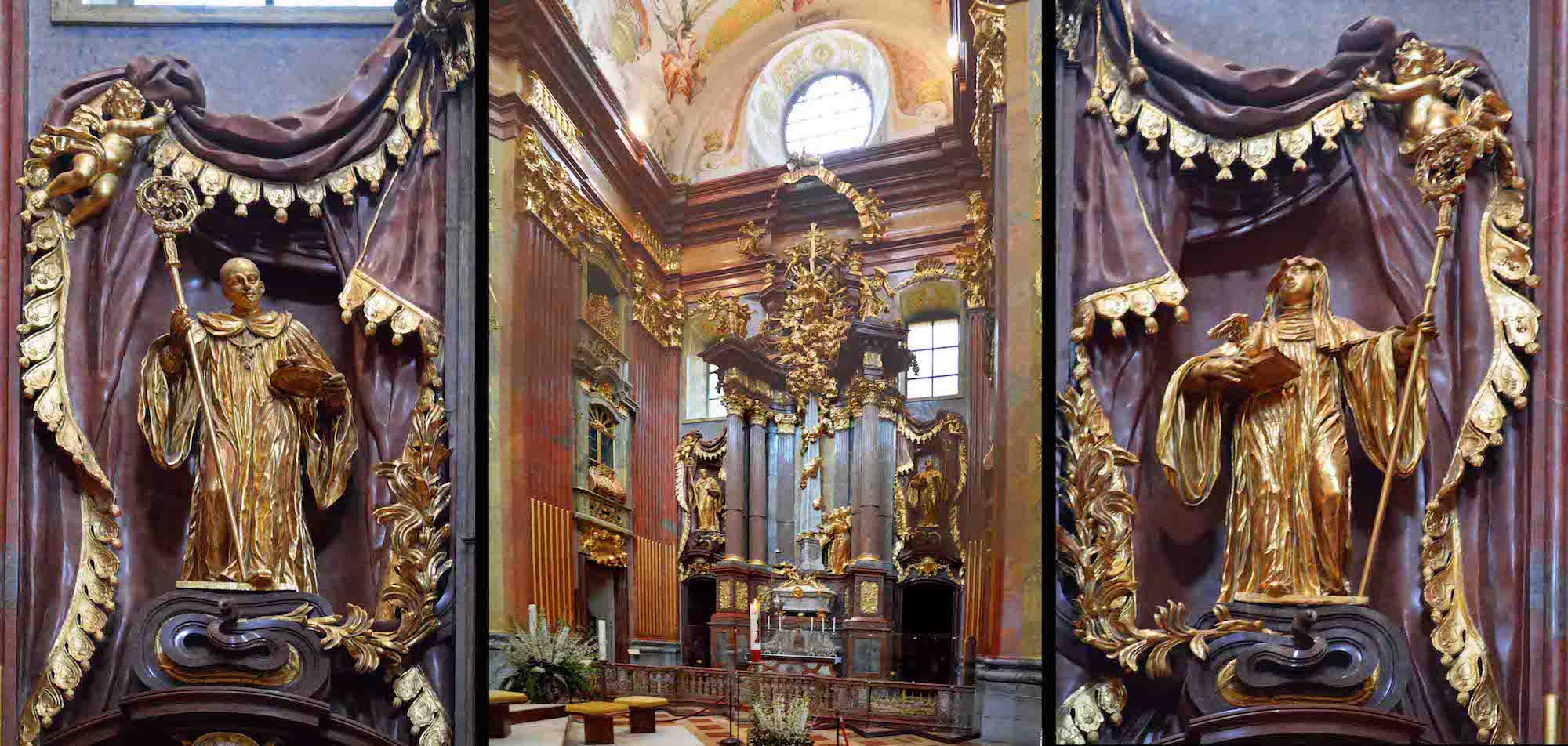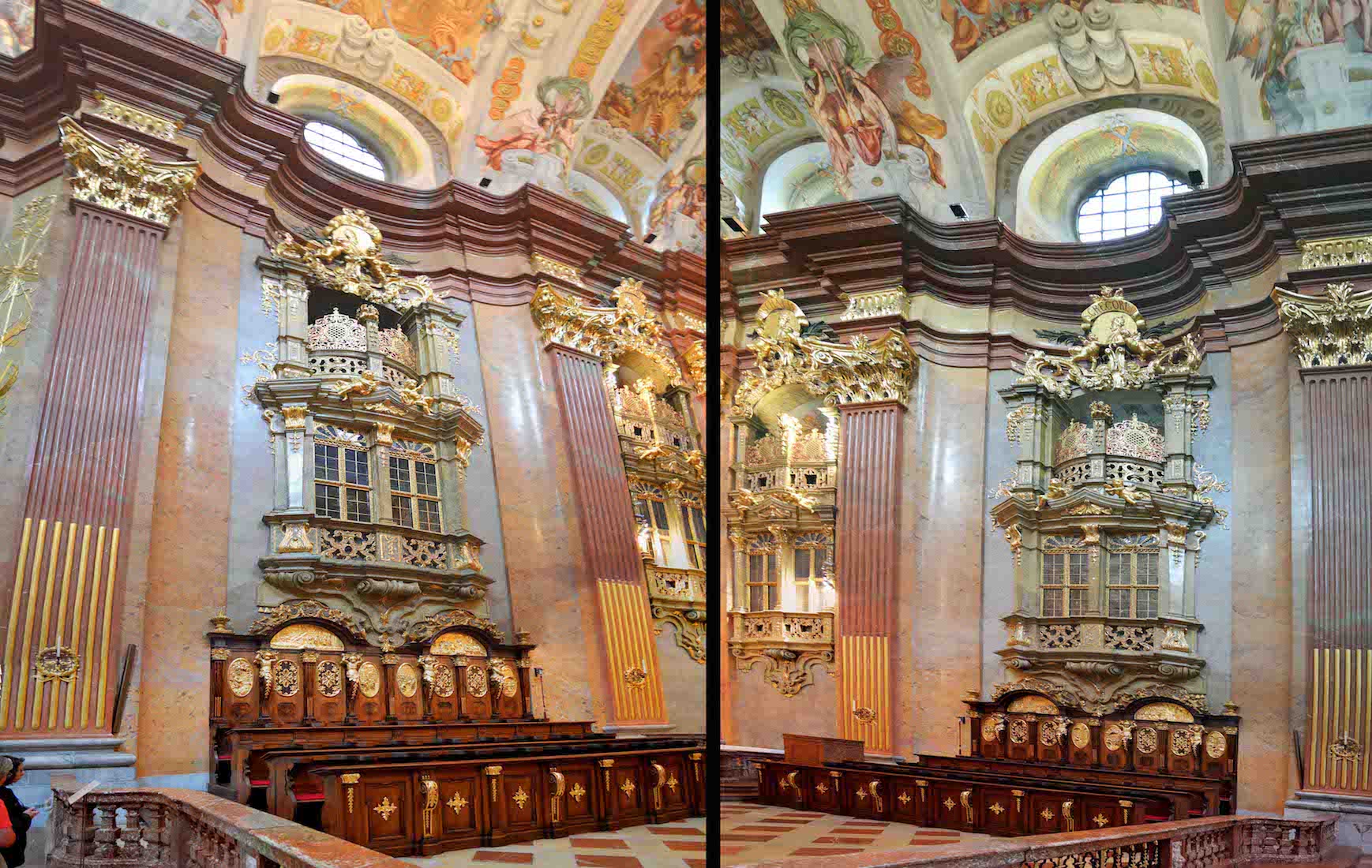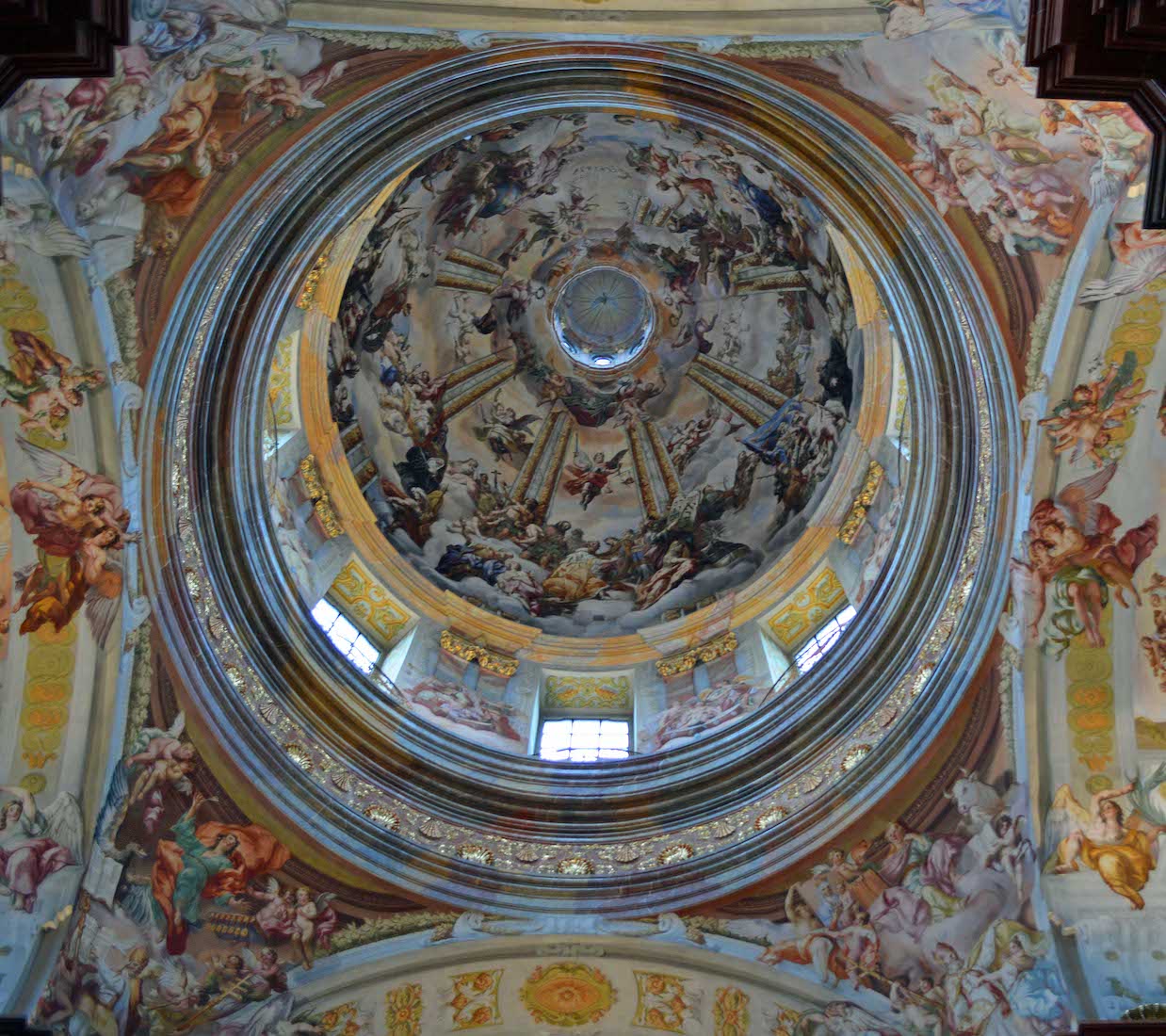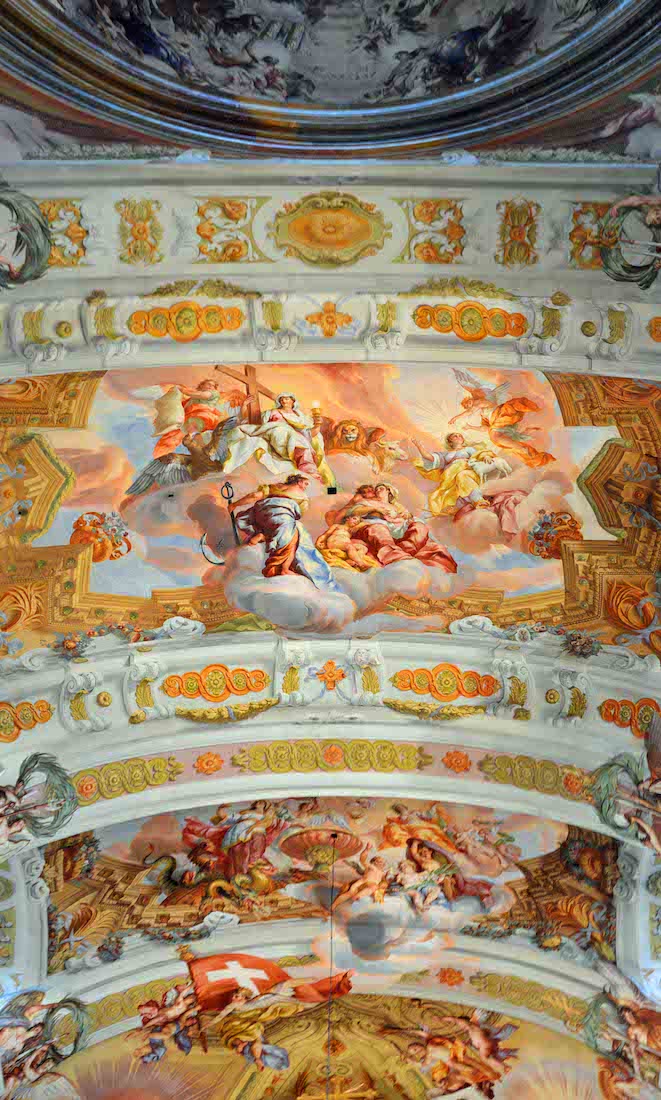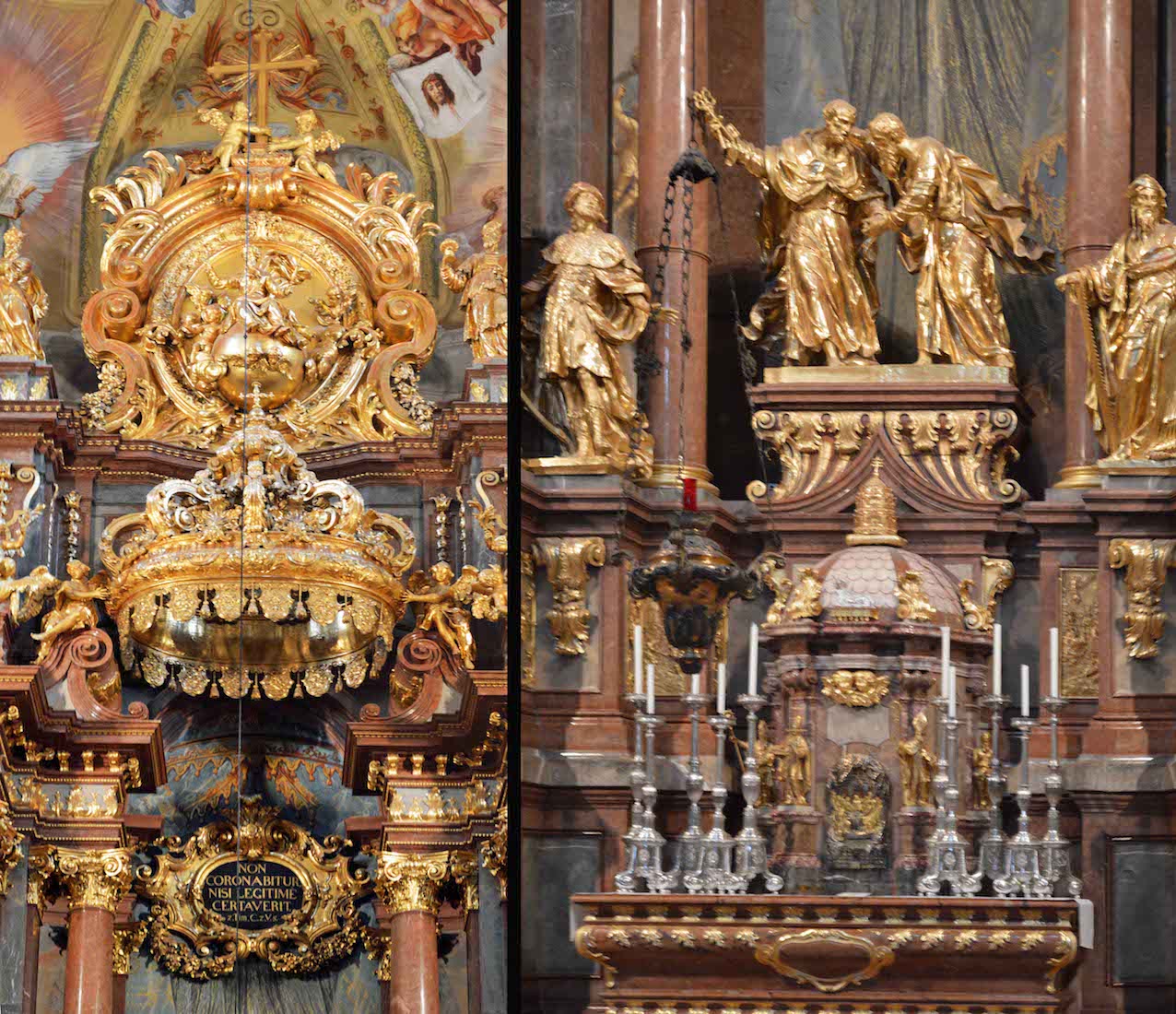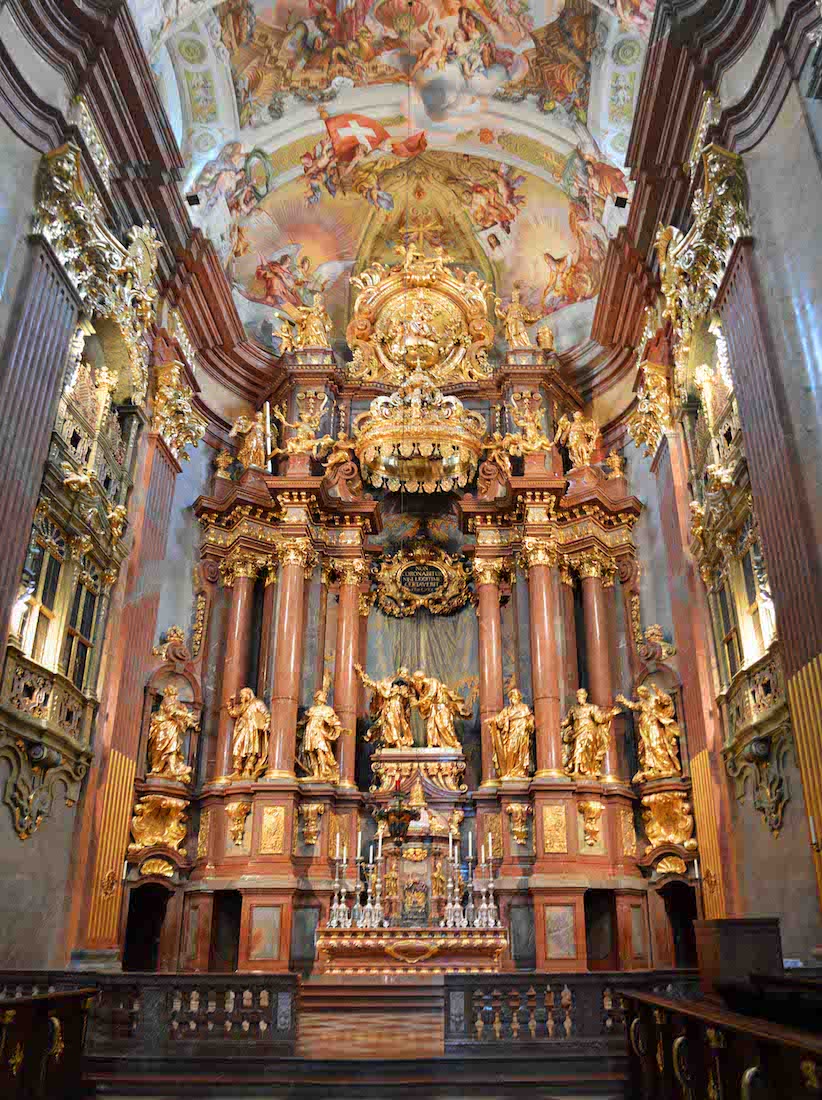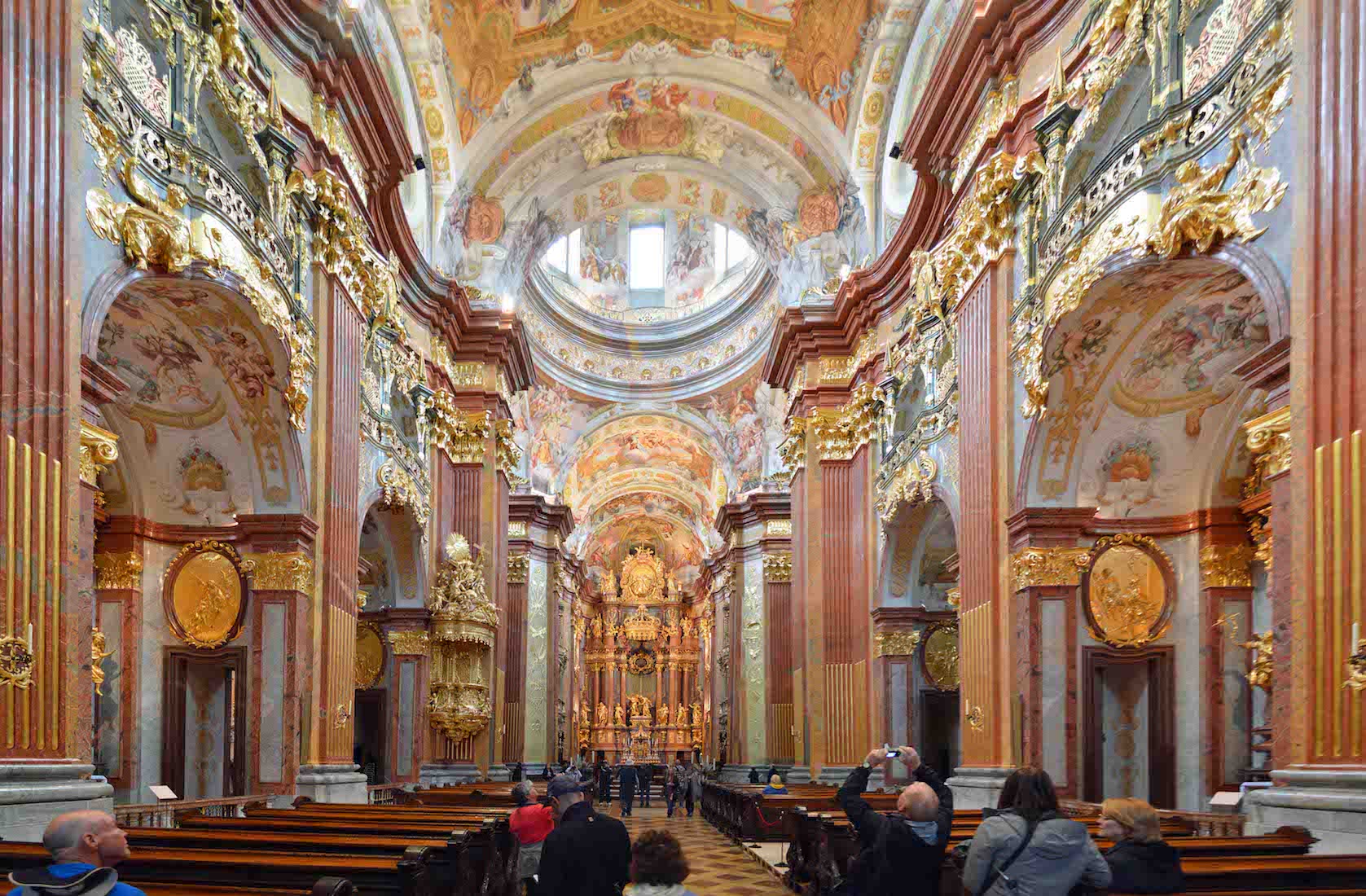
Words fail to describe this masterpiece of Baroque splendour! The flamboyant architecture, the colours of the ceiling fresco, stucco marble on the walls, the colouring of the galleries combined to create a wonderful symphony of form and colour. Gold, orange, ochre, grey and green create a warm colour accord. PLAN
62. SPLENDOUR!
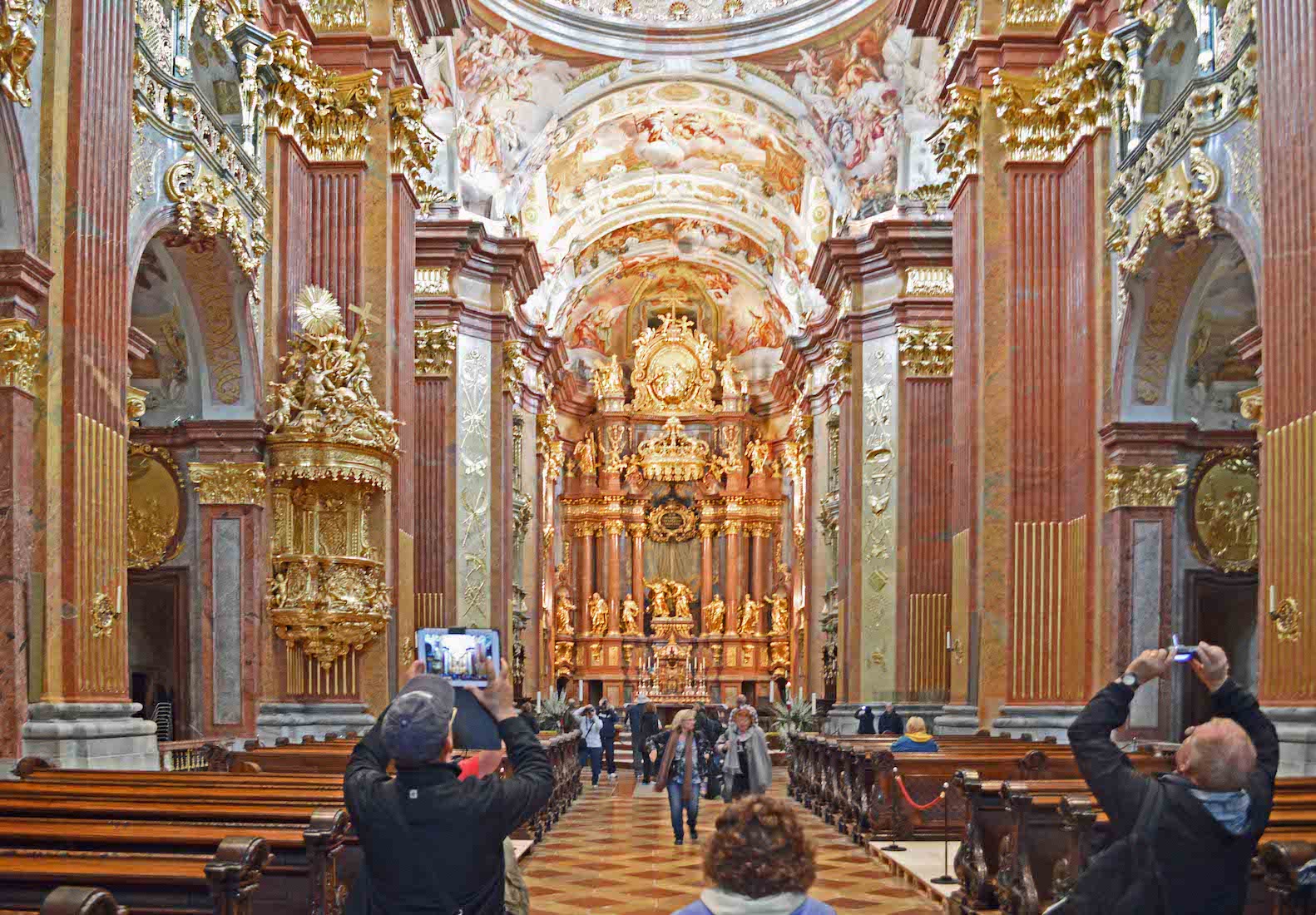
The interior design of the church seems to have been shaped by the hand of the Italian architect Antonio Beduzzi. His plans for many parts of the church have been maintained.
63. CHURCH VAULTING
The ceiling frescoes in the church were painted following Beduzzi’s plans by the Salzburg painter Johann Michael Rottmayr. The dome was created in 1716 –1717, and the ceiling fresco of the church was completed in 1722.
64. SIDE ALTAR – ST NICHOLAS
The sides of the nave are lined with chapel-like side altars, designed by the Italian Antonio Beduzzi. The central picture and the reliefs in each side altar show scenes from the life of the saint to whom the altar is dedicated. This altar at the back of the nave is dedicated to St Nicholas.
65. SIDE ALTAR – ST SEBASTIAN
Opposite the altar to St Nicholas is this altar dedicated to St Sebastian. The altar paintings in these two back altars were done by Paul Troger in 1746.
66. SIDE ALTAR – ST MICHAEL
The next altar on the left is dedicated to St Michael. The painting was done by Johann Michael Rottmayr in 1723. The sarcophagus contains the skeleton of a martyr named Clemens – a gift from Cardinal Crevelli.
67. SIDE ALTAR – ST JOHN THE BAPTIST
Opposite St Michael’s altar is this altar dedicated to St John the Baptist. This painting is also by Rottmayr, in 1727. On the altar are the remains of an unknown martyr from the catacombs in Rome, given the name Friedrich. This was a gift from Maria Theresa.
68. SIDE ALTAR – EPIPHANY
The third side altar on the left has another painting by Rottmayr, this one depicting the Adoration of the Magi, dating from 1723.
69. SIDE ALTAR – LEOPOLD
The third altar on the right side is called the Leopold Altar. The altar picture, done on a tin plate, dates back before the reconstruction, and was painted by Georg Bachmann in 1650. The picture shows scenes from the lives of Leopold I, II, and III.
70. PULPIT
Next on the left side we come to the golden pulpit. This was created by sculptor Peter Widerin. A depiction of Faith is shown casting demons of unbelief into the depths.
71. CHURCH WALLS
At this point in our exploration we pause and look back, taking in both the side walls of the nave. What a riot of colour and decoration this is!
72. GALLERIES
The Abbey Church has so much detail it is easy to miss even quite major features such as these galleries at the top of the nave side walls.
73. ORGAN
The original large organ was unfortunately lost in the remodelling of the Abbey church in 1929. However, in 1970 a purely mechanical pipe organ with three keyboards and 45 stops (3553 pipes) was built by the organ builder Gregor Hradetzky from Krems.
74. ST KOLOMAN’S ALTAR
The Church transept meets the axis of the Church with the dome surmounting the crossing. There is an altar on either side. On the left is St Koloman’s Altar which contains the remains of the saint. Above is an obelisk with the saint kneeling at the foot. At the sides of the obelisk are two saints: St Donatus (left), and St Florian (right).
75. ST BENEDICT’S ALTAR
On the other (right) side is St Benedict’s Altar. The group of figures represent the saint as he is said to have died, standing in the midst of his fellow brothers. The sarcophagus is empty and there is again a central obelisk. At the sides of the obelisk are two saints: St Berthold of Garsten (left), and St Scholastica (right).
76. CHOIR STALLS
Beneath the dome, and in front of the two side transept altars, are the choir stalls.
77. THE DOME
The Four Evangelists are pictured in the corner spandrels of the dome, and below each is a Latin Doctor of the Church: Matthew/Augustine, Mark/Hieronymus, Luke/Ambrosius, and John/Gregory the Great. The dome itself shows a magnificent heavenly scene including the Members of the Trinity, Mary, the apostles and a host of saints.
78. CEILING
We follow the ceiling down from the dome towards the high altar. The scenes depicted here relate to the dying Benedict and his ascension to heaven.
79. CROWN AND HIGH ALTAR
The theme of the high altar is the battling and triumphant church. Above the altar is a plaque with this central theme (Without a legitimate battle there is no victory – 2 Tim 2:5), and the crown of victory. Above the crown, God the Father sits on his throne, and above this is the cross of Christ.
80. HIGH ALTAR
We finish our tour of the Abbey Church with this final wide view of the high altar. Just above the altar are the figures of St Peter and St Paul. Between the altar columns are figures of the Old Testament prophets Daniel, Jeremiah, David, Isaiah, Ezekiel and Gideon. Our visit to the Melk Abbey Church has been quite unforgettable.
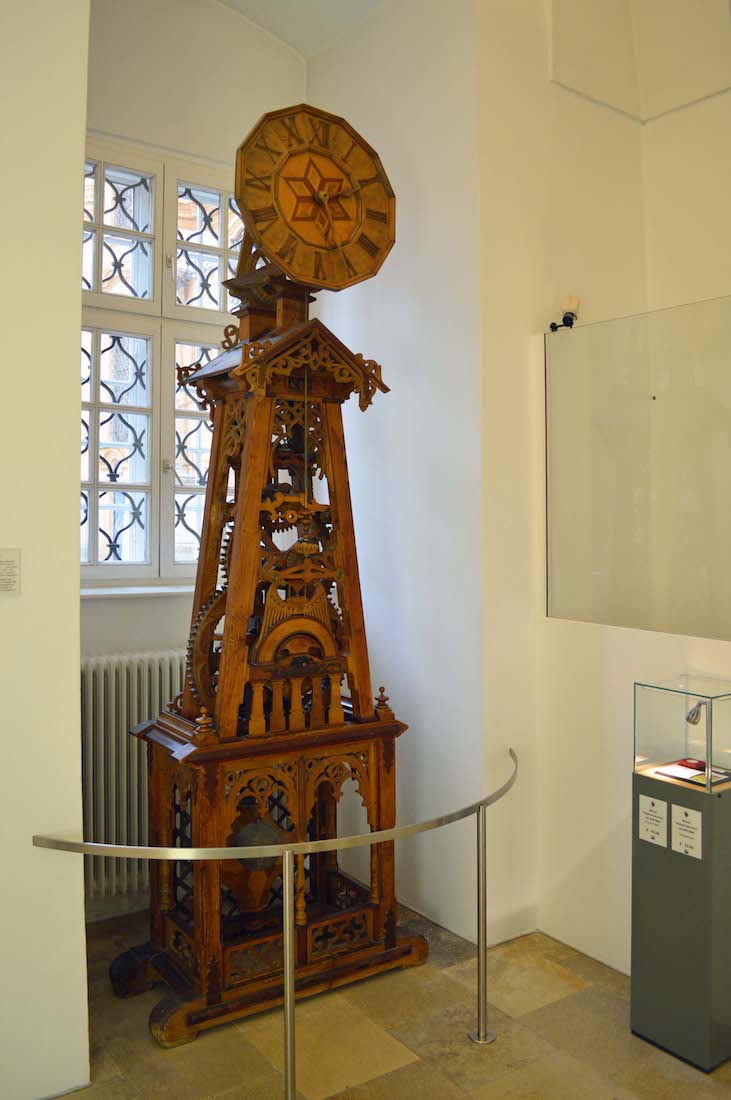
It is something of an anticlimax to leave the glories of the Church and leave via the gift shop, but this old clock near the gift shop deserves a mention. The clock is made entirely of wood including all the gears. It is the size of a grandfather clock but without the case. The inlay work on the clock face is exquisite.
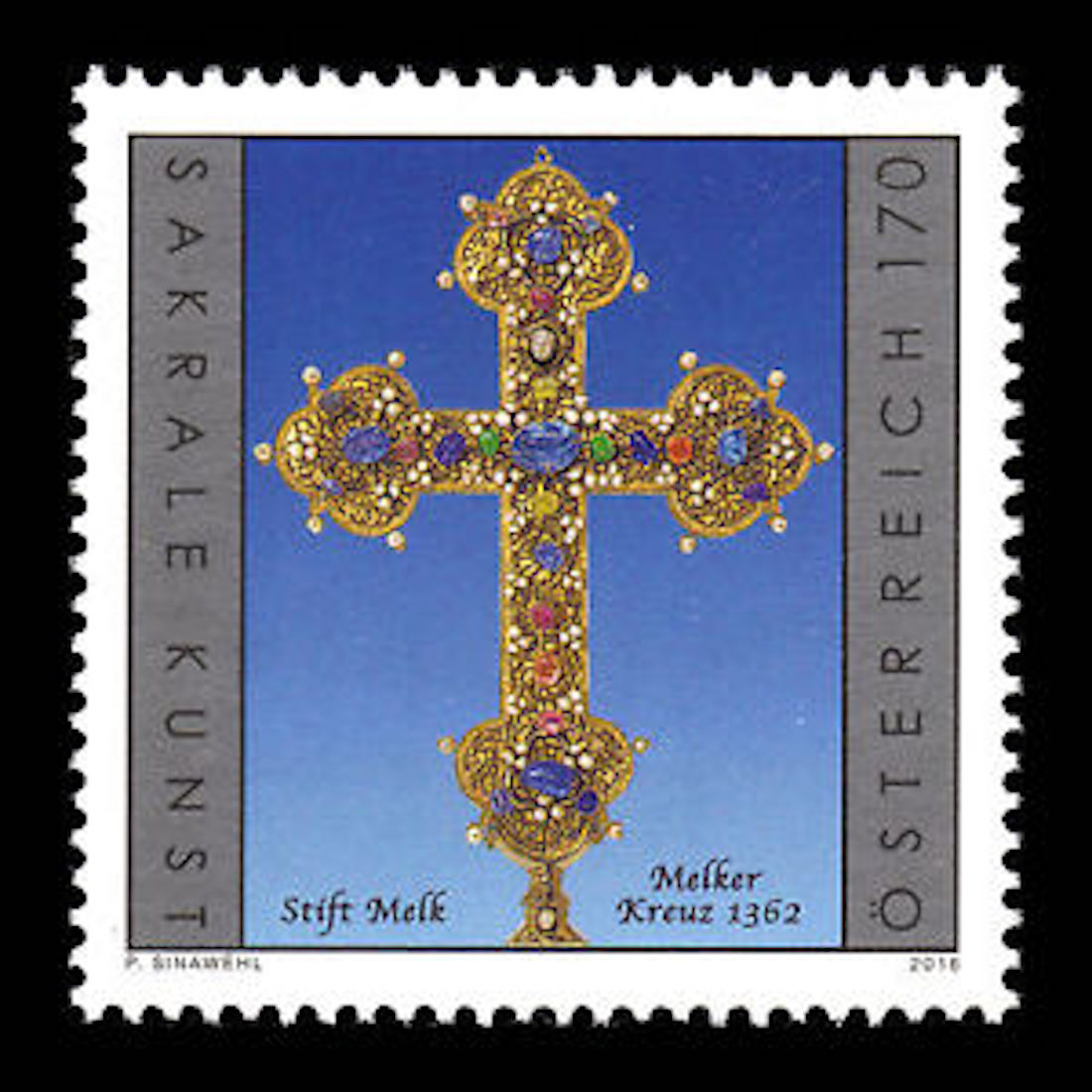
CONCLUSION
Melk Abbey is one of the jewels of Europe: it is impossible to visit here and not be impressed. I hope you have enjoyed visiting it with me.
I am happy to receive constructive comments or corrections concerning this website. The best websites are the ones which have no errors! I am grateful to my wife Margie who has proof-read these pages.
With one or two acknowledged exceptions, the photographs on this site are mine. They can be found in higher resolution at:
https://www.flickr.com/photos/paulscottinfo/albums/
However, the text draws heavily on other sources, and in particular the excellent Abbey booklet entitled ‘Melk Abbey’, and the Abbey pamphlet ‘On the Way from Yesterday to Today’. I am very happy to acknowledge these sources.
The Abbey has its own website:
http://www.stiftmelk.at/englisch/
Site created 01 / 2017 ; reformatted 01 / 2021
Paul Scott

